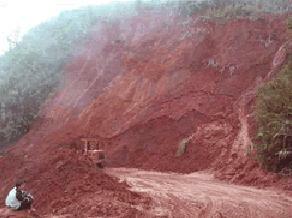forests > newsfile > new report questions the link between felling and flooding
New report questions the link between felling and flooding
Posted: 17 Oct 2005
While forests provide natural flood defences against runnoff, the massive flooding in Central America following Hurricane Stan earlier in October cannot be blamed on extensive deforestation, says a new UN report.
The report by the Food and Agriculture Organization of the United Nations (FAO) and the Center for International Forestry Research (CIFOR) says there is no scientific evidence linking large-scale flooding to deforestation. The same holds true, according to the report, for recent flooding in China, Thailand and Viet Nam.
 |
|
Mud slide on a denuded hillside in Laos
Photo Courtesy: North by Northwest Tours
|
The report, Forests and Floods: Drowning in Fiction or Thriving on Facts? comes as major floods around the world are taking place, particularly in the Asian lowlands, Eastern and Central Europe and Central America.
“Government decision makers, international aid groups, and the media are often quick to blame flooding on deforestation caused by small farmers and loggers,” said Patrick Durst, Senior Forestry Officer for FAO Bangkok. “The conclusion is not only wrong, scientifically, but such misguided views have in the past prompted governments to make life harder for poor farmers by driving them off their lands and away from the forests, while doing nothing to prevent future flooding.”
Environmental benefits
The FAO/CIFOR report acknowledges that forests can play a role in minimising runoff that causes localised flooding. But it concludes that there is no evidence that a loss of trees significantly contributes to severe widespread flooding.
“Planting trees and protecting forests can have many environmental benefits, but preventing large scale floods is not one of them,” said David Kaimowitz, Director-General of CIFOR. “The frequency of major flooding events has remained the same over the last 120 years going back to the days when lush forests were abundant.”
The FAO/CIFOR report point outs that the sharp increase in the economic and human losses attributed to flooding is caused not by deforestation but mainly by the simple fact that more people are living and working in flood plains. As a result, many floods that previously would have been only minor events now become major disasters.
“We need to stop blaming people who live and work in and around forests for floods that affect entire river basins, and instead consider the effect of a wide variety of land-use issues, which can in some instances include poor logging techniques,” said Dr Pal Singh of the World Agroforestry Center. “Policy-makers and development agencies have a moral and ethical responsibility to pursue solutions that are rooted in the best available science.”
As far back as the 19th century and continuing to the present, the conventional view has been that forests prevent floods by acting as a giant sponge, soaking up water during heavy rainfalls. But the massive floods that are blamed on deforestation almost always occur after prolonged periods of rains, which saturate the soil, including forest soil, so that it can no longer absorb additional water. Rainfall then has nowhere to go but into rivers where it fills them to the point of overflow.
But according to FAO and CIFOR analysts, there can be a political interest in leaving the conventional wisdom about forests and floods unchallenged. For example, it allows governments to respond with logging bans and give the appearance to the public they are taking decisive steps to stop flooding. The practical effect of such policies is to force poor farmers — who are routinely portrayed as major perpetrators of “illegal logging”, to abandon their lands. For example, catastrophic floods in China, Thailand and the Philippines prompted logging bans that put millions of people out of work.
Related links:
|

